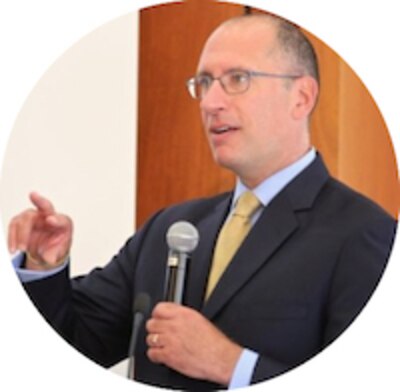I recently had the pleasure of visiting Sharif El-Mekki, the principal of a Mastery Charter School campus in Philadelphia. We walked the hallways and talked about how to infuse social justice, social-emotional learning, and other priorities into the everyday life of the school.

As we popped into classrooms, it struck me that the teachers all seemed to share a vision for what students should be learning and how they should be learning it. The instruction that I saw was not just excellent but also consistent. The rest of our discussion focused on how specific practices in use at Mastery might be adopted successfully by traditional high schools.
When I returned home that afternoon, I came across the Chalkbeat series on portfolio schools. I appreciated the comprehensiveness of Chalkbeat’s reporting. But having just spent some time visiting classrooms and talking with El-Mekki about what was actually happening inside classrooms, I couldn’t help but notice that the articles were devoid of any reference to teaching and learning.
As I wrote not long ago, the school reforms of the last two decades have pursued mainly structural solutions to instructional problems. To be clear, I think that structural changes — having to do with school governance, parental choice, data collection, accountability systems, and so on — can be important and valuable. But they aren’t valuable in and of themselves. Rather, they’re valuable only insofar as we put them into the service of a larger vision of what we want schools to achieve, for whom, and how.
That’s why, for example, my conversation with El-Mekki didn’t veer toward the structures that enable and hinder his school’s success (although I’m sure he could go on and on about them). Rather, he wanted to talk about the knowledge and skills his students need and the ways he works with teachers and staff to support their development. As he knows, that’s where the discussion should begin. That’s what gives context and meaning to any subsequent conversation about structural reforms in education.
When I was superintendent in Stamford, Connecticut, a very diverse system of about 15,500 students, we embarked on a major effort to de-track the middle and high schools. For generations, the system had placed black and Latino students in low-level classes and white students in honors and advanced courses. We urgently needed to make a structural change, and we did by eliminating lower level courses and changing the student assignment process.
These changes were necessary, but not sufficient. We also had to invest heavily in improving what students were learning in the classroom. Science became more hands-on, we established core texts in English and increased teacher content knowledge in mathematics. The structural changes were a catalyst for transformation, but the everyday student experience in the presence of a well-prepared teacher and rich content is what actually improved outcomes.
The core challenge we’re trying to solve in American public education is to graduate all kids with the knowledge, skills, and dispositions required to navigate an increasingly complex world on their own terms. In pursuit of this goal, it might be helpful to pursue the sorts of managerial tactics and decisions associated with portfolio districts: closing low-performing schools, expanding high-performing ones, and letting parents choose any school in the system. Then again, it might turn out that these tactics aren’t helpful at all, or that they’re helpful in some places and harmful in others. (After 15 years of No Child Left Behind and Race to the Top, reformers should know better than to assert that they know the one best way to reengineer troubled school systems.)
But I know from experience that we need to focus on the substance of what goes on in schools, not just the formal structures in which those schools operate.
The other element of great schools and systems that feels missing from the portfolio approach, as described in Chalkbeat, is attention to adult learning. Advocates for structural reform often chant simplistic slogans like “Children first,” and “Let’s focus on student needs, not adult interests.” But it’s disingenuous at best (pernicious is more like it) to suggest that 3.7 million teachers and hundreds of thousands of administrators are willfully choosing to disregard students’ needs — as though they know how to educate all children to high levels but don’t want to do so.
Likewise, it’s unhelpful for supporters of portfolio schools to make one-sided attacks on the unions, ignoring the essential protections they’ve given to generations of teachers, including the women and people of color who have made up the bulk of the teaching workforce throughout our history. It’s high time to put aside the dichotomous notion that schools must serve either the interests of adults or the needs of kids. In fact, leaders of all kinds of successful organizations know that productivity increases and clients are better served when adult workers are happy and engaged.
I’ve seen schools across the country show that when teachers are paid well, treated with respect, given opportunities to collaborate, encouraged to develop new knowledge and skills, held accountable for results, asked to teach a rich curriculum, and given the resources they need to do so, great things happen for kids — whether those teachers work in a charter school, traditional public school, or a private or parochial school.
Finally, I have to take issue with a comparison made by Ethan Gray, the head of Education Cities — which helps support the growth of the portfolio school model around the country — who likens the role of the organizations in his group to that of the quarterback of a football team. Those organizations have a catalyzing effect on local school systems, he says, handing off and passing resources to those who can move the ball forward. But the analogy rings hollow to me.
As a lifelong New York Giants fan, I’m aware that a few players, like Eli Manning, manage to have long and healthy tenures in that position (his remarkable streak of continuous games as the team’s starting quarterback just ended at 210). But most quarterbacks are here today and gone tomorrow. That’s why I always tell new school superintendents that they should think of themselves as a temporary steward of the community’s values. While one can push, cajole, inspire, and fight to transform systems in support of kids, the community will exist long after the superintendent has moved on.
Perhaps the portfolio approach can be a catalyst for useful changes in K-12 education. My advice to the leaders of that movement would be to be a little more humble, a lot more willing to adapt themselves to the values and wishes of community members, much less eager to prescribe structural solutions (e.g., parental choice and school closures) for complex problems, and much more mindful of the need to ground school improvement in the everyday work of teaching and learning.
Joshua Starr is the CEO of PDK International, an association for educators. He was previously the superintendent of schools in Montgomery County, Maryland and Stamford, Connecticut. He tweets @JoshuaPStarr.
About our First Person series:
First Person is where Chalkbeat features personal essays by educators, students, parents, and others trying to improve public education. Read our submission guidelines here.



